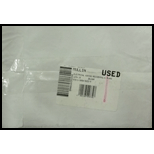
ELECTRICAL WIRING:RESIDENTAL-6 PLANS
18th Edition
ISBN: 9781305098329
Author: MULLIN
Publisher: CENGAGE L
expand_more
expand_more
format_list_bulleted
Concept explainers
Question
Chapter 30, Problem 15R
To determine
Mention how the circuit feeding the receptacle outlet located within 5 ft of the tub is protected.
Expert Solution & Answer
Want to see the full answer?
Check out a sample textbook solution
Students have asked these similar questions
please explain and draw the graphs clearly, I am most confused with the graphs thanks
please show step by step and explain clearly
Please solve this question step by step handwritten solution and do not use ai or chat gpt please thank you
Chapter 30 Solutions
ELECTRICAL WIRING:RESIDENTAL-6 PLANS
Knowledge Booster
Learn more about
Need a deep-dive on the concept behind this application? Look no further. Learn more about this topic, electrical-engineering and related others by exploring similar questions and additional content below.Similar questions
- Find the mathematical expression in fourier series for this output below shown in the image. This must have the terms ao, ak and bkarrow_forwardPlease solve this question step by step handwritten solution and do not use ai or chat gpt please thank youarrow_forwardPlease solve this question step by step hand written solution and do not use ai or chat gpt thank youarrow_forward
- Please solve this question handwritten, step by step showing details and no ai or chat gpt solution please thank youarrow_forwardPlease explain each quations, I'll give positive feedback. For the graphs, please draw what it looks likearrow_forwardplease explain all steps and draw any drawings, don't just explain what they look like please. thank youarrow_forward
- please explain and show all steps, thank you.arrow_forwardA rectangular waveguide with dimensions a = 2.5 cm, b = 1 cm is to operate at 15 GHz. σ = 0, E4, μ= 1 3- Calculate phase constant for TE10 mode. 4- Calculate the phase velocity and wave impedance for the same mode.arrow_forwardFind v(t) for t> 0 in the circuit of Fig. below. Assume the switch has been open for a long time and is closed at t = 0. Calculate v (t) at t = 0.5. 10 V 202 www +21 t=0 60 ww 13 F بلا SVarrow_forward
- Q: A rectangular waveguide with dimensions a = 2.5 cm, b = 1 cm is to operate at 15 GHz. σ = 0, E4, μ = 1 1- At which frequencies this type of TL (transmission line) operate ? 2- Why this this type is used in such frequencies? 3- Calculate phase constant for TE10 mode. 4- Calculate the phase velocity and wave impedance for the same mode.arrow_forwardK Q1/ For the system G(s)= (s+2)(s+4)(s+5) H(s)=1 a. Draw the Bode log-magnitude and phase plots. b. Find the range of K for stability from your Bode plots. c. Evaluate gain margin, phase margin, zero dB frequency, and 180° frequency from your Bode plots for K = 200arrow_forwardQ3/A unity-feedback system with the forward transfer function S(S+7) is operating with a closed-loop step response that has 15% overshoot. Do the following: a. Evaluate the settling time. b. Design a PD compensator to decrease the settling time by three times.arrow_forward
arrow_back_ios
SEE MORE QUESTIONS
arrow_forward_ios
Recommended textbooks for you
 EBK ELECTRICAL WIRING RESIDENTIALElectrical EngineeringISBN:9781337516549Author:SimmonsPublisher:CENGAGE LEARNING - CONSIGNMENT
EBK ELECTRICAL WIRING RESIDENTIALElectrical EngineeringISBN:9781337516549Author:SimmonsPublisher:CENGAGE LEARNING - CONSIGNMENT

EBK ELECTRICAL WIRING RESIDENTIAL
Electrical Engineering
ISBN:9781337516549
Author:Simmons
Publisher:CENGAGE LEARNING - CONSIGNMENT